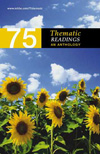
Scott Russell Sanders |  |
Scott Russell SandersScott Russell Sanders, "The Men We Carry in Our Minds" Scott Russell Sanders (1945- ) was born in Memphis, Tennessee. He earned
a B.A. from Brown University in 1967 and a Ph.D. from Cambridge University
in 1971. He's taught at Indiana University since 1971. While he writes
in several different literary genres, Sanders is perhaps best known for
his creative nonfiction—especially his nature writing. Sanders's books
include Fetching the Dead: Stories (1984), the science fiction
novel The Invisible Company (1989), and Writing from the Center
(1995). His work often appears in journals and periodicals, including
the Chronicle of Higher Education, The Utne Reader, Parabola,
The Georgia Review, and the Christian Science Monitor. He
has received fellowships from the National Endowment for the Arts and
the Guggenheim Foundation, a PEN award for fiction, and many other awards
and honors. "The Men We Carry in Our Minds," in which Sanders
examines the male role models he has encountered in his life, was first
published in the Milkweed Chronicle in 1984 and collected in The
Paradise of Bombs (1987). | QUESTIONS FOR DISCUSSION | CONTENT - Who were the first men the author remembers seeing?
- Describe the two images associated with Sanders's "early vision
of manhood."
- What can you tell about the nature of the relationship between
Sanders and his father?
- How does the author characterize the lives of the soldiers he saw
when he was a child?
- How does the author describe the bodies of the workingmen he knew
when he was a boy? How does he compare them to the women he knew then?
- What kinds of different people did Sanders meet when he was in
college? How did he react to the men there? How did he react to the
women?
STRATEGY AND STYLE - Discuss the use of black and white imagery in the first paragraph.
How does Sanders use this imagery to introduce what is to come?
- In terms of rhetorical mode, discuss how this piece can be classified
as either a division/classification essay or a comparison/contrast essay.
In either case, make sure you make clear all key words and that you
provide support for your choice.
- Find a simile in paragraph five. What's the nature of the comparison?
How can you connect this mental image to the types of men the author
recounts?
- Carry, a verb we usually associate with physical endeavor,
is juxtaposed with the word minds in the title. Discuss that
juxtaposition in light of how the author regards the men he describes
in the essay. Where are these words echoed in the body of the essay?
| ENGAGING THE TEXT | - Pick the one man who has had the greatest influence on your life.
Describe him and his impact upon you. How can you relate these ideas
to this essay?
- Do you communicate differently with members of the opposite sex
in compared to how you communicate with members of the same sex? Explain.
How might your feelings in this regard have influenced your reading?
| SUGGESTIONS FOR SUSTAINED WRITING | - Write an essay about the role of women in this reading. What chronological
dividing point can you use in order to characterize them? Where are
they discussed? What are they doing? How much of the essay does the
author devote to describing them?
- This piece stretches, roughly, from 1950 to 1970 in time, from
when the author was about four through his college years. Using your
reading as a springboard, write an essay covering similar years in your
life and what has affected you about sex roles during that time.
| FOR FURTHER RESEARCH | Do some research to find out what the students were up to in the mid
1960s at Brown University, where this author was an undergraduate. What
were students wearing? What were they listening to on the radio? What
kinds of courses were they taking? What were some of their extracurricular
activities? How can you relate what you found to your understanding of
"The Men We Carry in Our Minds"? | WEB CONNECTION | Interested in what Sanders himself reads? Take a look at this list
of his twenty favorite books. How many of them have you read? How many
are you going to read now? | LINKS | Biographical This is Sanders's homepage
at the Indiana University Graduate Creative Writing Program's site.
There, you'll find a photo and a biographical sketch. Take a look at this brief biography.
What is its source? How does it differ from the one you visited above?
If you had to pick just one as a research source, which one would you
pick? Why? What can you tell about Sanders from studying this portrait
of him? How do you go about studying a portrait, anyway?
Bibliographical This essay,
called "Sorrow and Solidarity," presents the author's thoughts
about America's early response to the attacks of September 11th. Time for some multimedia: Click here
to see a video featuring Sanders talking about his book, The Force
of Spirit. Read this quote
from the author's book Staying Put. What is it doing on a page
about spirituality and health?
Cultural Did you know that Sanders writes books for children? You can learn
about one of them, Warm as Wool, by visiting this page. Has reading about Sanders's life and work interested you in doing some
nature writing of your own? This page
of nature writing links will help you on your way. If this were your
page, what other authors would you include? Here is some information
about a couple of awards that Sanders has won from the National Endowment
for the Arts.
|
|
|
|